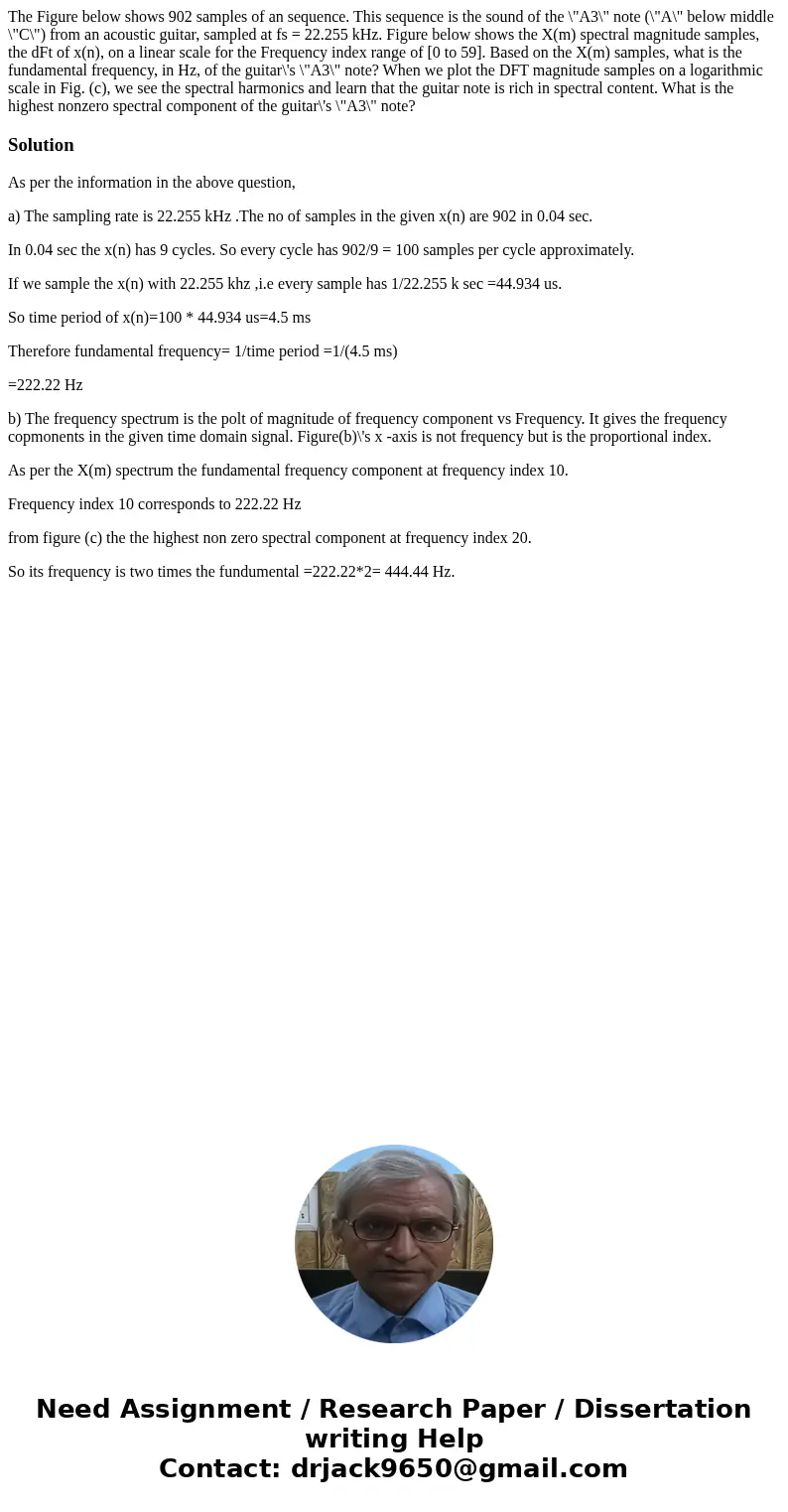The Figure below shows 902 samples of an sequence This seque
Solution
As per the information in the above question,
a) The sampling rate is 22.255 kHz .The no of samples in the given x(n) are 902 in 0.04 sec.
In 0.04 sec the x(n) has 9 cycles. So every cycle has 902/9 = 100 samples per cycle approximately.
If we sample the x(n) with 22.255 khz ,i.e every sample has 1/22.255 k sec =44.934 us.
So time period of x(n)=100 * 44.934 us=4.5 ms
Therefore fundamental frequency= 1/time period =1/(4.5 ms)
=222.22 Hz
b) The frequency spectrum is the polt of magnitude of frequency component vs Frequency. It gives the frequency copmonents in the given time domain signal. Figure(b)\'s x -axis is not frequency but is the proportional index.
As per the X(m) spectrum the fundamental frequency component at frequency index 10.
Frequency index 10 corresponds to 222.22 Hz
from figure (c) the the highest non zero spectral component at frequency index 20.
So its frequency is two times the fundumental =222.22*2= 444.44 Hz.

 Homework Sourse
Homework Sourse